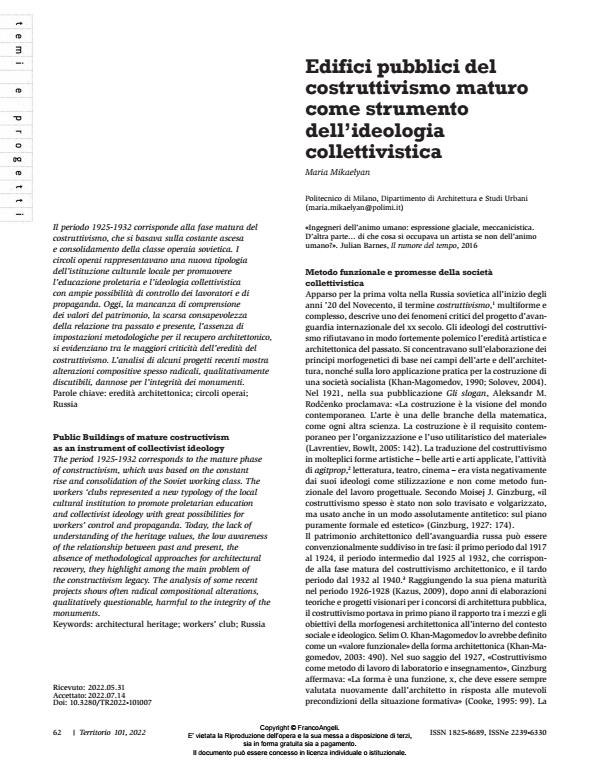Public Buildings of mature costructivism as an instrument of collectivist ideology
Journal title TERRITORIO
Author/s Maria Mikaelyan
Publishing Year 2023 Issue 2022/101
Language Italian Pages 7 P. 62-68 File size 318 KB
DOI 10.3280/TR2022-101007
DOI is like a bar code for intellectual property: to have more infomation
click here
Below, you can see the article first page
If you want to buy this article in PDF format, you can do it, following the instructions to buy download credits

FrancoAngeli is member of Publishers International Linking Association, Inc (PILA), a not-for-profit association which run the CrossRef service enabling links to and from online scholarly content.
The period 1925-1932 corresponds to the mature phase of constructivism, which was based on the constant rise and consolidation of the Soviet working class. The workers ‘clubs represented a new typology of the local cultural institution to promote proletarian education and collectivist ideology with great possibilities for workers’ control and propaganda. Today, the lack of understanding of the heritage values, the low awareness of the relationship between past and present, the absence of methodological approaches for architectural recovery, they highlight among the main problem of the constructivism legacy. The analysis of some recent projects shows often radical compositional alterations, qualitatively questionable, harmful to the integrity of the monuments.
Keywords: architectural heritage; workers’ club; Russia
Maria Mikaelyan, Edifici pubblici del costruttivismo maturo come strumento dell’ideologia collettivistica in "TERRITORIO" 101/2022, pp 62-68, DOI: 10.3280/TR2022-101007